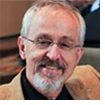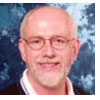STEM: The Wonder of it All!
 STEM means so many distinct things to different people. Some think of robot competitions, not exactly an inviting image for many young people. Others think of AP tests in math and sciences. Another downer for many! Still others may think of myriad items to memorize and parrot back on tests – math formulas, multi-syllabic biology terms, Newton’s Laws of Physics, the Periodic Table, etc. Not exactly what you leap out of bed for in the morning! STEM means so many distinct things to different people. Some think of robot competitions, not exactly an inviting image for many young people. Others think of AP tests in math and sciences. Another downer for many! Still others may think of myriad items to memorize and parrot back on tests – math formulas, multi-syllabic biology terms, Newton’s Laws of Physics, the Periodic Table, etc. Not exactly what you leap out of bed for in the morning!
I’m not saying that students should not know the fundamentals. They should. They must. But in today’s education environment, where is the room for imagination, creativity, play, asking why and what if? And doing this may be much harder than any of the items listed above. But also much more enjoyable and satisfying. Read more.
Super Bowl Week: STEM and Gridiron Glory
 We are in the midst of our third year of Science Thursday at the Bullock Texas State History Museum in Austin. At these monthly event's, we offer hands-on STEM activities that have connections to Texas history as well as its culture and environment. In September a new exhibit opened, “GRIDIRON GLORY - The Best of the Pro Football Hall of Fame”. After all, Texas is the home of “Friday Night Lights” – both the movie and television show. The challenge was to develop a short activity associated with this exhibit for the students on field trips to the museum. We are in the midst of our third year of Science Thursday at the Bullock Texas State History Museum in Austin. At these monthly event's, we offer hands-on STEM activities that have connections to Texas history as well as its culture and environment. In September a new exhibit opened, “GRIDIRON GLORY - The Best of the Pro Football Hall of Fame”. After all, Texas is the home of “Friday Night Lights” – both the movie and television show. The challenge was to develop a short activity associated with this exhibit for the students on field trips to the museum.
The criteria we had to meet included:
- STEM and exhibit -related
- Easy to implement
- Quick to do (to avoid taking too much time away from the museum exhibits)
and, most importantly,
- Of interest to both 4th and 7th graders (when they study Texas history) and both girls and boys. Read more.
|
 |
MIT Looks to Make the World a Better Place
 Following the recommendations of The Future of MIT Education Task Force Report, MIT is launching the new pK-12 Action Group that brings MIT’s unique “mens et manus” (Mind and Hand) approach to learning beyond the campus to learners and educators of all ages, building upon existing efforts and developing new ones. This Action Group will fill a growing need in STEM education by initiating new research, design, and outreach programs that will transform how students learn – and our understanding of how students learn. It will engage MIT faculty, staff, students, and researchers in pursuing two major, interconnected goals: 1) Changing the World through Learning – Bringing the MIT hands-on, minds-on approach to pre-kindergarten through grade 12 (pK-12) learners and educators through the development of new technologies, services, and curricula. These will range from low-cost laboratory instruments and innovative computing environments to new strategies for connecting learners around the world. Read more. Following the recommendations of The Future of MIT Education Task Force Report, MIT is launching the new pK-12 Action Group that brings MIT’s unique “mens et manus” (Mind and Hand) approach to learning beyond the campus to learners and educators of all ages, building upon existing efforts and developing new ones. This Action Group will fill a growing need in STEM education by initiating new research, design, and outreach programs that will transform how students learn – and our understanding of how students learn. It will engage MIT faculty, staff, students, and researchers in pursuing two major, interconnected goals: 1) Changing the World through Learning – Bringing the MIT hands-on, minds-on approach to pre-kindergarten through grade 12 (pK-12) learners and educators through the development of new technologies, services, and curricula. These will range from low-cost laboratory instruments and innovative computing environments to new strategies for connecting learners around the world. Read more.
Highlighting ESSA Changes
 Now that the Elementary and Secondary Education Act (ESEA) was reauthorized by Congress, sense-making, otherwise know as the rulemaking, of the law begins. Let’s start at the beginning. The first thing to know is that the bill is no longer called No Child Left Behind or NCLB, but is now known as the Every Student Succeeds Act or ESSA (and, that is pronounced typically with a short ‘e’ at the beginning: Es’ Suh). Now that the Elementary and Secondary Education Act (ESEA) was reauthorized by Congress, sense-making, otherwise know as the rulemaking, of the law begins. Let’s start at the beginning. The first thing to know is that the bill is no longer called No Child Left Behind or NCLB, but is now known as the Every Student Succeeds Act or ESSA (and, that is pronounced typically with a short ‘e’ at the beginning: Es’ Suh).
The bill is divided into several parts called Titles. STEM related issues are found mostly in Title II and in Title IV, though there are some STEM items in Title I. The focus here will be to outline some of those major highlights of ESSA that affect overall education as well as STEM. Read more. |